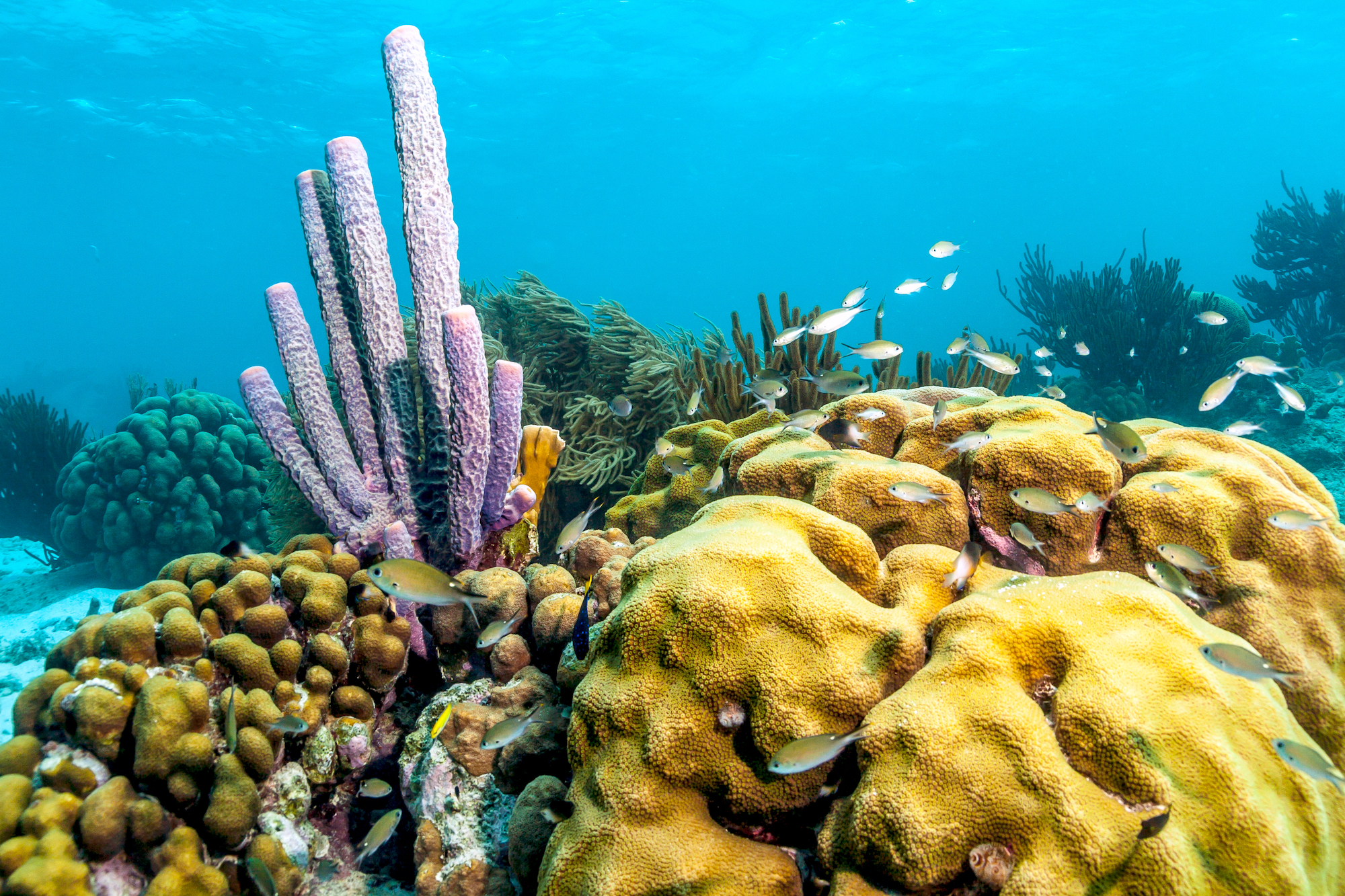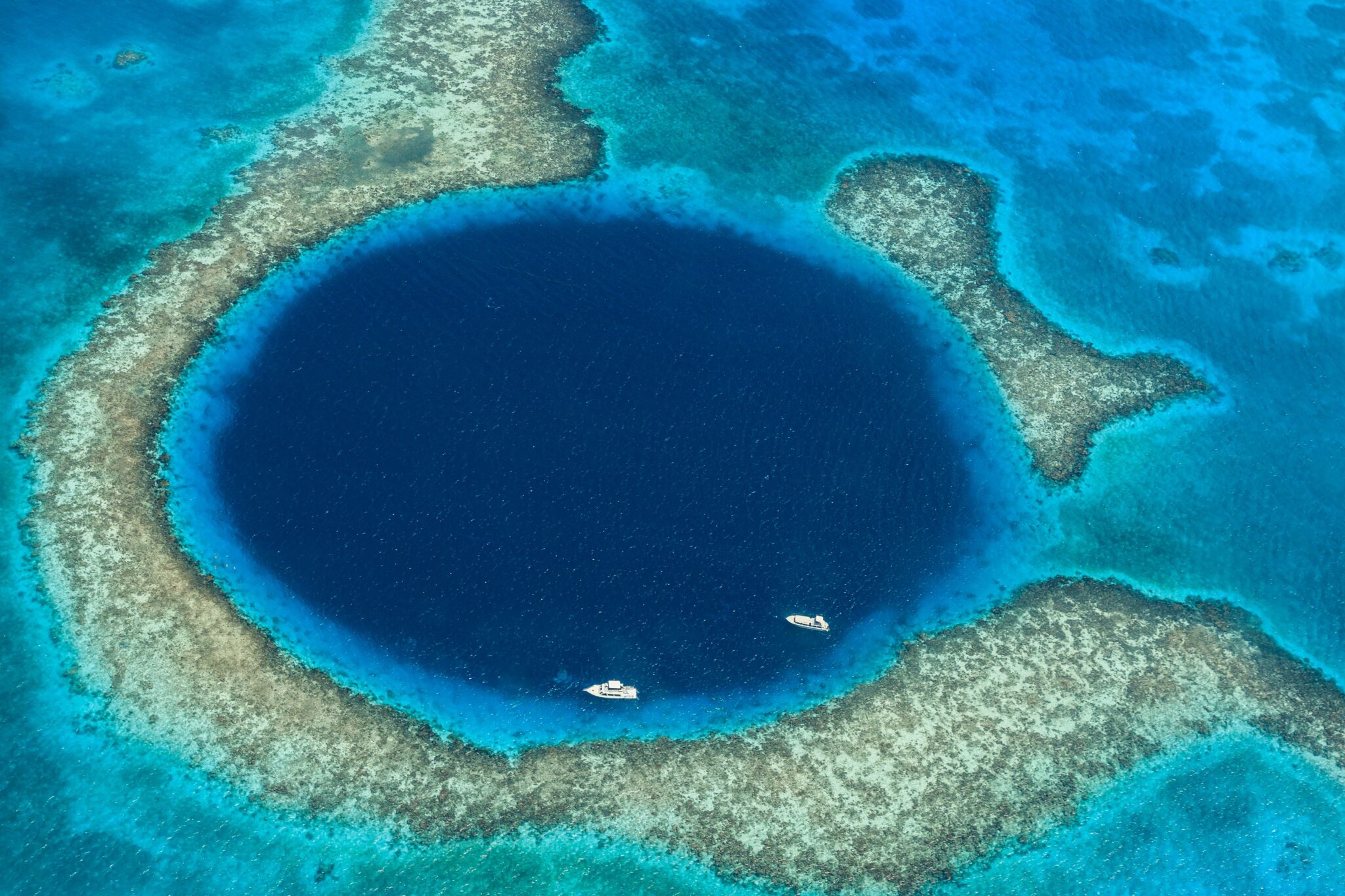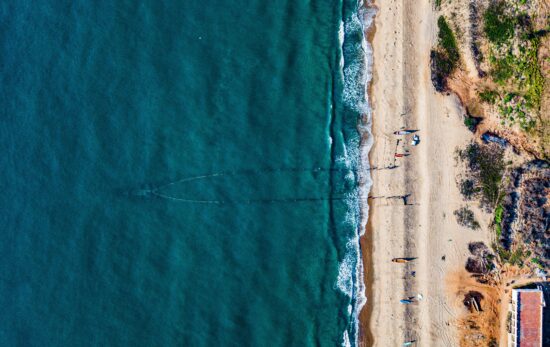Naming the best dive sites in the world is certainly a risky business. The ocean is constantly in flux, and the desires of scuba divers are also wildly varied. However, a few sites do stand out above the rest in terms of diver reviews, consistently favorable conditions, and regularly being featured in lists of the world’s top 10 dive sites. So, in this collection, we highlight a mix of the top dive sites across the continents to suit different diving interests and abilities.
By the way, this is the summary article for our “Best Dive Sites” series. For even more recommendations, be sure to take a look at the other dive site round-ups before planning your next scuba diving adventure:
- Night Diving: The 13 Best Dive Sites in the World
- The 10 Best Liveaboard Destinations For Advanced Divers
- Freshwater Diving: The 10 Best Dive Sites in the World
- Muck & Macro Diving: The 10 Best Dive Sites in the World
- The 10 Best Dive Sites for Underwater Photography
- 6 Best Dive Sites for Kids Around the World
- Whale Shark Diving: The 13 Best Dive Sites in the World
- Shark Diving: The 16 Best Dive Sites in the World
- Manta Ray Diving: The 10 Best Dive Sites in the World
- Technical Diving: The 10 Best Dive Sites in the World
- The 9 Most Extreme Dive Sites in the World (for Recreational Divers)
- Cave & Cavern Diving: The 10 Best Dive Sites in the World
- Wreck Diving: The 10 Best Dive Sites in the World
- Liveaboard Diving: The 13 Best Dive Sites in the World
Keep reading to discover our picks for the best dive sites in the world.

1. Bajo Alcyone – Cocos Island, Costa Rica
Cocos Island, which lies far from the Costa Rican Pacific coast, is only accessible by liveaboard but ranks consistently as the top destination in the world for hammerhead diving with this first-class dive site. The seamount known as Bajo Alcyone rises to 25m (82ft) below the surface and is regularly home to large shoals of hammerhead sharks. The diving can be tricky, but the plan is simple. You’ll descend to the top of the seamount, wedge yourself between the rocks, and watch the action above. This is truly an epic site and worthy of a place on every “best dive sites” list!
- Dive Type: Shark
- When to Go: June to November for the best marine life; December to May for the best water conditions

2. SS Thistlegorm – Ras Mohammed, Egypt
One of the best wreck dives in the world (and probably one of the most famous dive sites), the SS Thistlegorm lies in the northern section of the Red Sea. As a popular day trip and liveaboard stop, it’s easily accessible from Sharm El-Sheikh. The wreck itself was previously a 128m (420ft) British transport ship. Unfortunately, she met her fate in 1941 when she was sunk by a German air attack. Today, she remains a window into history with a visible cargo of trucks, jeeps, motorcycles, tanks, and even a locomotive. For this reason, many divers consider it one of the top 3 dive sites in the world.
- Dive Type: Wreck
- When to Go: March to May; September to November

3. Blue Corner – Ngemelis Island, Palau
Blue Corner is a dive for the ages. It consists of a reef-covered wall that runs along the side of Ngemelis Island in Palau. While the dive is great at any time due to the massive schools of fish, this drift-diving site shows its best face when the currents are strong (think more current, more fish – it’s never been more apt). Here, you’ll use reef hooks to carefully attach to the wall and watch a number of pelagic species swim past. Common sights include tuna, sharks, and eagle rays. This is undoubtedly some of the best reef diving in the world, and many Blue Corner alumni claim that they have never seen so many sharks on a single dive.
- Dive Type: Drift
- When to Go: October to May

4. Manta Night Dive – Kona, Hawaii
Certainly one of the most unique night dives, the Manta Night Dive is a ballet for manta rays which lands this Hawaiian destination on countless lists of the top 10 dive sites worldwide. Just off the coast of Kona is an artificially illuminated area where you’ll descend to the sandy observation areas. As the light attracts plankton, mantas arrive to take advantage of the feast. All you need to do is relax and enjoy the show while the graceful manta rays turn and spin overhead.
- Dive Type: Night
- When to Go: April to October
5. Cenote Angelita – Tulum, Mexico
Mexico is unquestionably one of the best diving countries in the world, and thousands of cenotes are scattered throughout its Yucatán Peninsula. While many of them could easily find a spot on this list, the mystical quality of Cenote Angelita makes it hard to ignore. At approximately 30m (100ft), the clear freshwater is separated from the saltwater below by a layer of hydrogen sulfide. The appearance of this cloudy substance is otherworldly and makes for fantastic underwater photography.
- Dive Type: Cave/Cavern
- When to Go: May to September

6. Tiger Beach – Grand Bahama Island, Bahamas
Known for shark diving, the Bahamas is a wonderland country of fantastic dive sites and home to some of the best diving in the Caribbean. While you can swim with hammerheads, oceanic whitetips, and reef sharks, at Tiger Beach, you’ll find daily encounters with several tiger sharks all at once. While you wait on the sandy bottom, these large sharks circle around the group in an experience that will delight thrill seekers and underwater photographers alike. There’s also a chance to see nurse, lemon, and Caribbean reef sharks at this famous Bahamas shark dive site.
- Dive Type: Shark
- When to Go: October to January

7. Secret Bay (Manit Muck) – Anilao, Philippines
A wonderland for macro lovers and underwater photographers, Secret Bay (or Manit Muck as it’s known locally) is often cited as one of the top 10 dive sites in the Philippines. This site is quite shallow at between only 3 and 21 meters (10 and 70 feet), but it is abundantly productive for macro marine life and critters. In fact, many divers have reported sightings of mantis shrimp, rare nudibranchs, gobies of all types, and even wonderpus octopuses. This is also one of the area’s best dive sites for night diving, when Ambon scorpionfish, Bobbit worms, seahorses, frogfish, and other nocturnal species become active.
- Dive Type: Muck/Macro
- When to Go: October to May
8. Silfra Fissure – Thingvellir National Park, Iceland
Diving between continental plates may sound risky, but scuba divers flock to the Silfra Fissure year-round for the pleasure. Granted, these plates are moving so slowly that you will never know it. With 100m (300ft) visibility, exploring the space between the North American and Eurasian tectonic plates in Iceland is a dream. Glide along with the aquatic grasses full of blues and greens before snapping a picture between the rock faces of the plates. This is without a doubt one of the best places to scuba dive in Europe.
- Dive Type: Freshwater
- When to Go: June to September for the best conditions; October to May for fewer crowds

9. Sardine Run – Agulhas Bank, South Africa
Certainly an adventurous dive, the Sardine Run attracts pelagic-loving scuba divers to South Africa on an annual basis. During a few weeks from May to July, millions of sardines spawn at Agulhas Bank before migrating upwards along the coast toward Mozambique. On the way, many predators wait to feast on the tiny fish. These larger animals include dolphins, birds, sharks, and whales. Diving the Sardine Run requires patience because dive boats spend many hours on the chilly seas searching for bait balls. When you find one of these congregations, you’ll jump in quickly to see the feeding frenzy!
- Dive Type: Pelagic
- When to Go: May to July

10. Cape Kri – Raja Ampat, Indonesia
Raja Ampat seems to be on every diver’s bucket list these days. Still, there is good reason for it, and Cape Kri is one of the dive sites that put this region on the map. A few years ago, scientists recorded the most fish species on a single dive at this site. The diving conditions at Cape Kri are suitable for all levels and promise some of the best scuba diving in Southeast Asia. You just need to dive into the warm water and then slowly glide along the healthy coral reef, taking in all the colorful life around you.
- Dive Type: Coral Wall
- When to Go: October to April

11. 1,000 Steps – Bonaire
Home to sensational coral gardens and marine diversity (accessible just moments from calm, easy-to-reach beaches), the Caribbean’s Bonaire is revered for some of the world’s best shore diving. In particular, 1,000 Steps is one of the island’s most popular dive sites. With a gentle reef plateau at 6 to 9 meters (20 to 30 feet) deep, it regularly appears in lists of the 10 top dive sites for kids or beginners. It’s also a hotspot for squid, butterflyfish, angelfish, trumpetfish, and green sea turtles.
- Dive Type: Shore
- When to Go: Year-round
12. SMS Markgraf – Scapa Flow, Scotland
Sitting in 45m (150ft) of water, the SMS Markgraf battleship was one of 52 German ships scuttled at Scapa Flow shortly after the end of World War I. However, post salvage, only seven of this fleet remain underwater today. What sets the SMS Markgraf apart is not only its depth but its colossal size (46m/480ft long), upturned position, and pristine condition. Technical divers will be best placed to explore the iconic features of this world-class wreck diving site to the fullest.
- Dive Type: Wreck/Technical
- When to Go: April to October

13. North Horn – Great Barrier Reef, Australia
We couldn’t talk about the planet’s best dive sites without mentioning the Great Barrier Reef. Indeed, this natural wonder could fill a list of Australia‘s top 10 dive sites all by itself. In Osprey Reef, North Horn is one of the area’s most sought-after dives, especially for pelagic action. Drift dives along vibrant, coral-encrusted walls regularly bring encounters with gray, silvertip, hammerhead, tiger, and wobbegong sharks – sometimes in a single dive! You might also spot barracuda, giant trevallies, tuna, eagle rays, and even manta rays gliding past.
- Dive Type: Shark/Drift
- When to Go: June to November

14. USAT Liberty – Bali, Indonesia
If dreamy beaches, azure waters, and regular encounters with Mola mola weren’t enough, Bali is also home to one of the best wreck dive sites in the world: the USAT Liberty. This 120m (400ft) cargo ship saw both WWI and WWII action before being torpedoed in 1942. After rusting on a beach for two decades, volcanic activity finally nudged her into the shallow waters near Tulamben. Now, scattered across the seabed, she’s a thriving habitat for marine life, such as nudibranchs, scorpionfish, pygmy seahorses, parrotfish, and turtles. Starting at just 3m (10ft) deep and accessible even from the beach, this wreck site is a firm favorite with divers and snorkelers, as well as one of the world’s best dive spots for beginners.
- Dive Type: Wreck
- When to Go: April to November

15. Maaya Thila – North Ari Atoll, Maldives
As popular with scuba divers as it is with honeymooners, the Maldives – a nation of nearly 2,000 islands – claims many of the world’s best dive sites. In particular, liveaboard itineraries around Ari Atoll promise exciting drift dives and pelagic encounters with whale sharks, hammerheads, and manta rays. One of the region’s top scuba diving destinations is Maaya Thila. Starting from a mere 6m (20ft) deep, this protected pinnacle is characterized by dramatic caves and walls lined with gigantic Gorgonian fan corals. Schools of barracuda and batfish hang in the blue while stonefish, stingrays, and nurse sharks shelter under ledges. It’s thrilling by day, but when dusk falls and the resident reef sharks gather in a feeding frenzy, you’ll see why this is one of the best dive sites for sharks and night diving.
- Dive Type: Pinnacle/Night
- When to Go: December to May

16. Richelieu Rock – Andaman Sea, Thailand
Located in Koh Surin Marine National Park, about 28 miles (45km) from mainland Thailand, Richelieu Rock is revered as one of Jacques Cousteau’s favorite scuba diving places. The highlight of this remote, horseshoe-shaped reef is a pinnacle that plunges to around 30m (100ft). In particular, it’s a dream for macro photographers, with crustaceans, moray eels, seahorses, ghost pipefish, and frogfish hiding among the vibrant red and purple corals. Beyond the critters, this is also one of the best places for scuba diving with megafauna; whale sharks and manta rays often visit to feed in these nutrient-rich waters. However, this area is also known for strong currents, so make sure you’re confident in drift diving techniques before traveling.
- Dive Type: Pinnacle/Shark
- When to Go: October to May; February to April is the best time for whale sharks

17. Blue Hole – Belize
Part of a UNESCO World Heritage Site reef, the Blue Hole is 43 miles (70km) from mainland Belize. At 300m (1,000ft) wide, this natural sinkhole is so big it can be seen from space. Unsurprisingly, it’s one of the most famous dive sites and entices snorkelers, scuba divers, freedivers, and technical divers from across the globe. Near the sunlit surface, you’ll find colorful fish and corals, from parrotfish to purple sea fans. As you descend, the Blue Hole transforms into an eerie realm shaped by limestone cave formations such as stalagmites, stalactites, ledges, and overhangs. While it’s too dark for most marine life to thrive, these depths are populated by plentiful nurse, Caribbean reef, bull, and hammerhead sharks. This is considered one of the world’s best deep dive sites. However, plunging to over 120m (400ft) deep, the bottom is off-limits for recreational divers.
- Dive Type: Reef/Technical
- When to Go: April to June
Discover the Best Dive Sites in the World
Have you already visited these superb dive sites and want to discover more? Or do you still have a lot to check off your bucket list?
Whether you’re seeking the best dive sites for scuba diving with sharks, want to photograph the most beautiful dive sites in the world, or are just curious about what country has the best diving sites, head to PADI Travel® for all these answers and more. With support from the 24/7 expert PADI Travel team, you’ll find inspiration and advice alongside unmissable deals to help you plan your next scuba adventure.





